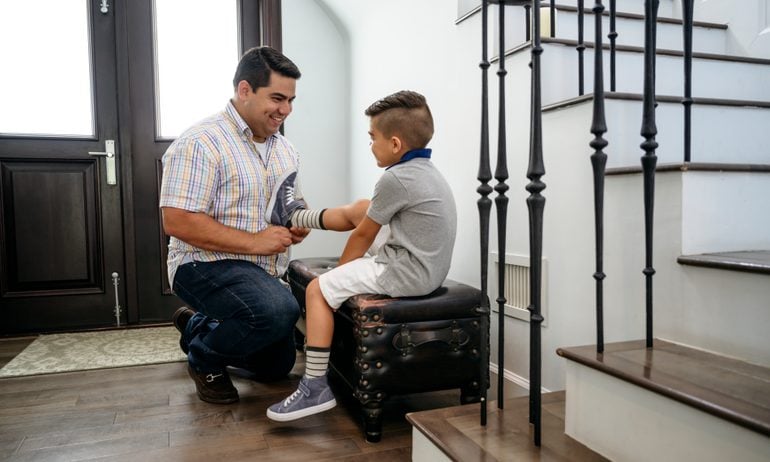What Is a Second Mortgage?

Some or all of the mortgage lenders featured on our site are advertising partners of NerdWallet, but this does not influence our evaluations, lender star ratings or the order in which lenders are listed on the page. Our opinions are our own. Here is a list of our partners.
Second mortgages, or junior liens, are a way to turn your home equity into readily available funds without selling your house.
A second mortgage increases your overall debt and can lead to foreclosure if you're unable to pay it back. It's considered "second" or junior because, in the event of bankruptcy or foreclosure, it's second in line to be paid off, after your original mortgage.
» MORE: What is a mortgage?
How does a second mortgage work?
Taking out a second mortgage means you'll have an additional loan that's secured by your home, even though in most cases you haven’t yet paid off the first one.
In order to get a second mortgage, you'll need sufficient home equity. To estimate your home equity, subtract the current mortgage balance from your home’s value — that’s the amount of your home that you truly own.
“A second mortgage lets you convert some of your home equity into money you can use today.”
A second mortgage lets you convert some of your equity into money you can use today without refinancing or selling your home. Unlike a refinance, a second mortgage does not alter your primary mortgage one bit — it's a completely separate loan.
You'll make monthly payments on both loans simultaneously, but in a worst-case scenario where you go into foreclosure or file for bankruptcy, the lender on your original mortgage would be paid off before any funds went to the lender holding the second mortgage. (It's grim, but that's how it works.)
In such a scenario, it's possible the second mortgage lender would not fully be repaid. That's one reason why second mortgages tend to have higher interest rates than primary mortgages. Though higher than regular mortgage rates, second mortgage rates are likely to be lower than interest rates for personal loans or credit cards.
» MORE: Estimate your home's value
HELOC & Home Equity Loans from our partners

on New American Funding
580
$750,000
on New American Funding

on Bethpage Federal Credit Union
670
$1,000,000
on Bethpage Federal Credit Union
Types of second mortgages
Here's a rundown of common second mortgage types you might come across:
A "piggyback loan" is a second mortgage that's taken out at the same time as the primary mortgage. Also called an 80-10-10 loan, it allows borrowers to avoid paying mortgage insurance by combining a second mortgage for 10% of the home's cost with a primary mortgage for 80% of the home's cost.
A home equity loan, or HEL, is a type of second mortgage that provides you with a lump sum, which you repay at a fixed rate over a set term.
A home equity line of credit, or HELOC, is an adjustable-rate, open-ended second mortgage that you withdraw from as needed, then repay over time.
The term "stand-alone second mortgage" refers to a second mortgage that's not taken out at the same time as your original loan. Both HELs and HELOCs are stand-alone second mortgages.
If your original mortgage is completely paid off, you can still take out a home equity loan or line of credit. After all, you'll have plenty of equity to borrow against. But the home equity loan or HELOC would be the primary loan in this case, since it would be your only mortgage.
» MORE: See how much you could borrow with our home equity loan calculator
Qualifying for a second mortgage
The qualification requirements for a second mortgage vary depending on what type of junior lien you're seeking and the lender you choose.
But there's one qualification requirement that's a constant: For any stand-alone second mortgage, you'll need to have accrued sufficient home equity to borrow against. The amount you can borrow with a second mortgage usually tops out at 85% of your equity.
“The amount you can borrow with a second mortgage usually tops out at 85% of your equity.”
A credit score of 620 is the typical minimum for a second mortgage. Lenders may ask for a higher score, especially if you're trying to borrow a large amount. A higher credit score can also help you get a lower rate.
Just as with a primary mortgage, your debt-to-income ratio — how much of your monthly earnings goes toward monthly debt payments — should be less than 43% for a second mortgage. Lenders can require a lower DTI if they choose, however.
How do you get a second mortgage?
Getting a second mortgage is fairly similar to getting a primary mortgage, though there are a few differences.
You won't have a real estate agent, and you won't need an inspection. You will, however, need a home appraisal, since the current value of your home plays a major role in determining how much you can borrow.
Here's an overview of the steps you'll take to get a second mortgage:
Calculate your approximate home equity and determine how much you want to borrow.
Gather documentation of your current income and debts.
Compare second mortgage lenders.
Apply for the second mortgage.
Review the disclosure documents. Verify that the terms are what you expected and that you can afford the second mortgage payments.
Provide any additional documentation needed for underwriting.
Close on the second mortgage.
HELOC & Home Equity Loans from our partners

on New American Funding
580
$750,000
on New American Funding

on Bethpage Federal Credit Union
670
$1,000,000
on Bethpage Federal Credit Union
» MORE FOR CANADIAN READERS: How does a second mortgage work?


